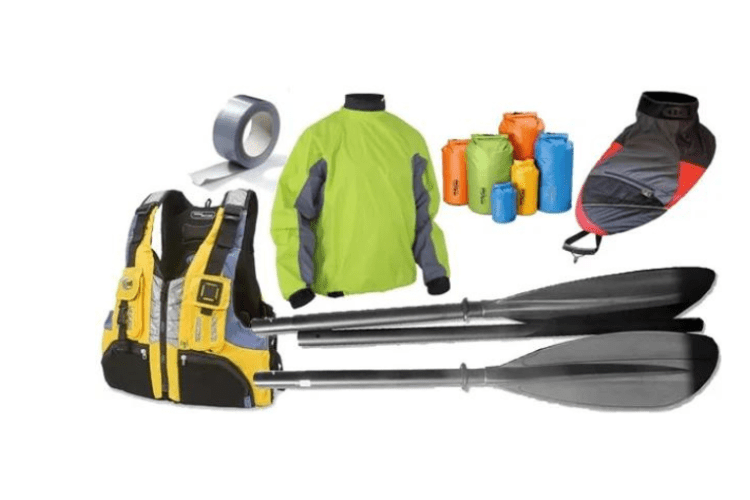How To Ride a Longboard: Essential Gear and Precautions for Safe Ride
Longboarding is a type of skateboarding that involves riding on a longer and wider skateboard deck.
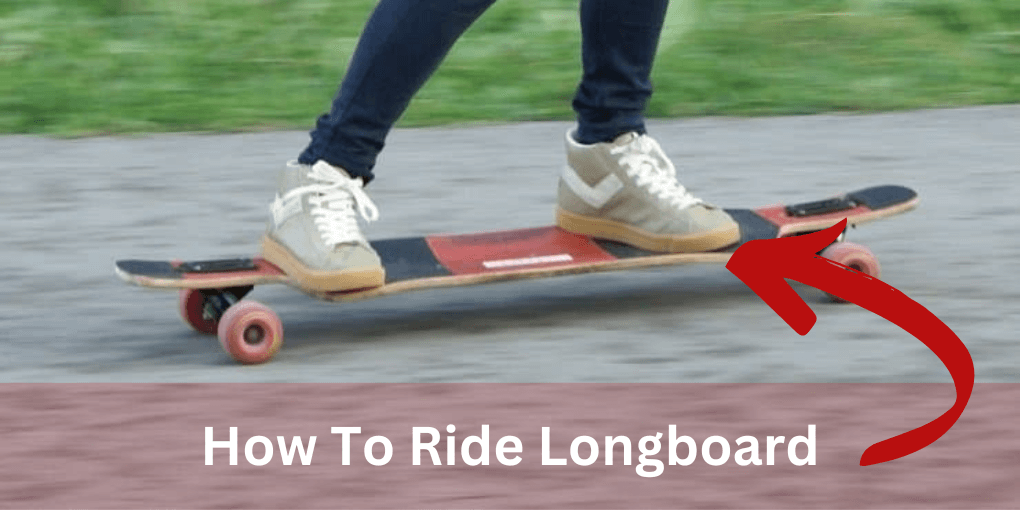
It is designed for stability and speed. It is a fun and dynamic sport that allows riders to cruise around, carve, slide, and even perform tricks.
Longboarding has grown in popularity over the years and has become a beloved pastime for people of all ages and skill levels.
Whether you are a beginner or an experienced rider, longboarding is a great way to enjoy the outdoors.
But riding the longboard is not so easy. You can follow I’m Reko, you will get different types of short techniques to learn the functionality of a longboard as well as read this guide to understand how to ride a longboard and enjoy your riding experience.
What is Longboarding?
Longboarding is a popular form of skateboarding that involves riding on a longer board.
According to the authority, you will find the measurement around 33 to 60 inches in length. Unlike traditional skateboarding, which is often used for performing tricks and stunts, longboarding is designed for a more relaxed style.
It offers a smooth and flowing experience. It is an excellent form of transportation, recreation, and exercise. This is enjoyable for people of all ages and ability levels.
Longboarding has become a global phenomenon, with dedicated communities.
Events all around the world make it a fun and accessible activity for anyone who wants to try it.
Importance of LearningHhow to Ride a Longboard
Learning how to ride a longboard safely is crucial for an injury-free longboarding experience.
A solid understanding of the basics and proper technique can help prevent falls and accidents.
It also allows the riders to control their boards with ease and confidence. Mastering the fundamentals of longboarding can improve a rider’s performance.
It helps them progress to more advanced riding styles and tricks.
So, taking the time to learn how to ride a longboard is essential for anyone looking to get into the sport.
Equipment You Need to Ride a Longboard

Longboard Deck
The longboard deck is the main platform for the rider. It comes in a variety of shapes, sizes, and designs to suit different riding styles.
When choosing a longboard deck, consider the deck’s length, width, and concave. You should also notice the material and construction quality.
Trucks
Trucks are the metal components that attach the wheels to the deck and allow the rider to turn and carve.
To choose trucks, you need to consider the size, style, and adjustability to ensure a smooth and stable ride.
Wheels
Wheels are round components to make contact with the ground. It provides grip and stability.
When choosing wheels, consider the size, hardness, and shape to suit your riding style.
Bearings
Bearings are small metal components that allow the wheels to spin freely on the axle. The quality, ABEC rating, and lubrication should be perfect for a smooth and fast ride.
Safety Gear
Safety gear is crucial for protecting the rider from injury. It is needed for beginners or advanced riders who will be going fast or performing tricks. Essential safety gear includes a helmet, elbow and knee pads, and wrist guards.
How To Ride a Longboard
Here, I have described some techniques for riding a longboard. Let’s follow
Finding a suitable location
When starting out, it’s important to find a safe and suitable location to practice riding your longboard.
Look for a flat, clear surface with little to no traffic. Make sure the area is free of obstacles that could cause a fall or collision.
Stance and balance
Learning proper stance and balance is the foundation of longboarding.
Stand with your feet shoulder-width apart and bent your knees to distribute your weight over the deck.
Pushing and gliding
Pushing and gliding are the basic motions of longboarding. It involves pushing off with one foot and gliding on the deck with the other foot.
Practice pushing and gliding in a straight line to develop your balance and control.
Stopping techniques
Knowing how to stop safely is an important part of riding a longboard. Practice using your foot to drag or heel brake, or use the carving or powerslide technique to slow down or stop.
How to ride a longboard safely and efficiently
Learning to ride a longboard safely and efficiently is crucial because:
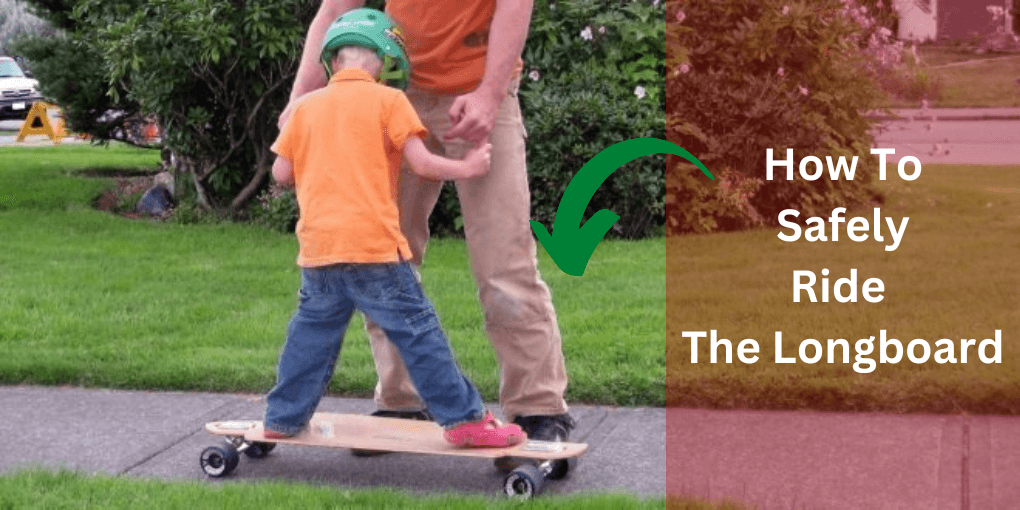
- It minimizes the risk of accidents and injuries, both to the rider and to others.
- It enhances the experience by allowing for smoother and more controlled rides.
- Proper techniques can extend the lifespan of the longboard and save money in the long run.
- It can improve performance and prepare the rider for more advanced riding techniques.
- It demonstrates responsible and considerate behavior, promoting a positive image of longboarding.
Advancing Riding Skills
Advancing your riding skills can bring numerous benefits, including:
- Increased confidence and mastery of the longboard.
- The ability to tackle new and more challenging terrain.
- Improved balance and control, leading to smoother and more efficient rides.
- The opportunity to take part in more advanced riding styles such as downhill, freeriding, and freestyling.
- A sense of personal accomplishment and satisfaction with one’s longboarding abilities.
By practicing and pushing themselves, riders can improve and evolve their skills. It leads to an increasingly exciting and fulfilling longboarding experience.
Safety Tips for Riding a Longboard
Here are some important safety tips for riding a longboard:
- Wear safety equipment, such as a helmet, knee and elbow pads, and wrist guards.
- Stay aware of your surroundings, including other riders, pedestrians, and vehicles.
- Maintain a safe speed and always be in control of your longboard.
- Use proper pushing and carving techniques to maintain balance and stability.
- Avoid riding in hazardous weather conditions, such as rain or ice.
- Always ride on designated paths or areas and obey traffic laws.
- Use a suitable longboard for the riding style and terrain.
By following these safety tips, riders can reduce the risk of accidents and injuries. Have a safer, more enjoyable longboarding experience.
How to choose the right gear
Choosing the right gear is an essential step in learning how to ride a longboard. Some of the key pieces of equipment you will need to include a longboard, protective gear, and accessories.
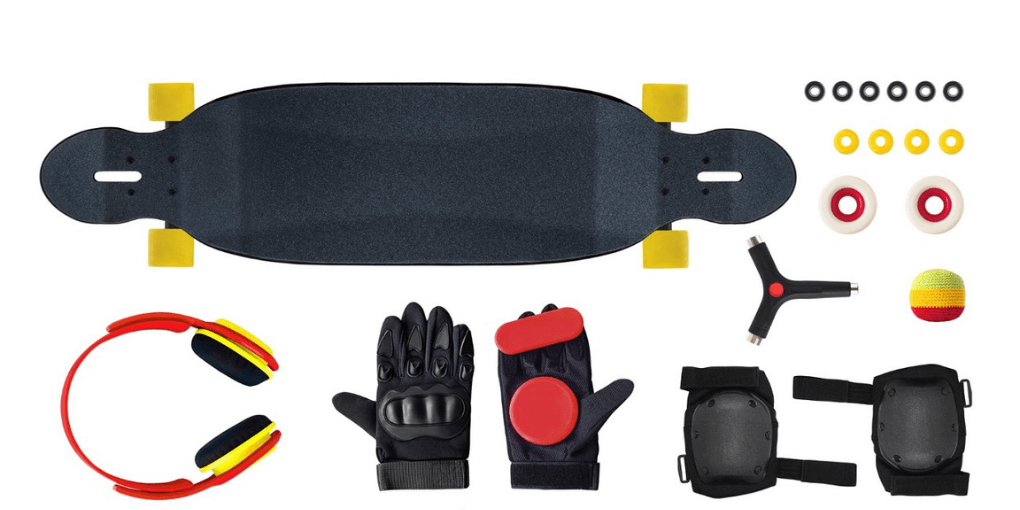
When choosing a longboard, consider the following factors:
- Deck shape: The shape of the deck can affect stability, maneuverability, and control. Choose a deck that matches your riding style and level of experience.
- Wheel size and hardness: Wheel size and hardness can affect the speed, grip, and smoothness of the ride. Consider your riding surface and terrain when choosing wheels.
- Trucks: Trucks connect the wheels to the deck and affect turning and stability. Consider the width of the truck and the angle of the truck baseplate when making your selection.
For protective gear, it is essential to wear a helmet, knee, and elbow pads, and wrist guards. Make sure to choose gear that fits and is comfortable to wear.
Explanation of Stance and Balance
Explanation of the riding stance: The riding stance is the position you take on your longboard while riding.
The most common riding stance is called the “regular” stance. It involves placing your left foot forward and your right foot back.
For those who are left-handed, the “goofy” stance can be used, which is the opposite of the regular stance.
Importance of maintaining balance: Maintaining balance is crucial when riding a longboard. When riding, you must be able to maintain balance while making turns, riding over rough terrain, and stopping.
Shift weight and maintain balance: To shift weight and maintain balance, keep your weight centered over the longboard. You can use your knees and ankles to make small adjustments as needed.
When riding on hills, shift your weight to the downhill side to maintain balance and control.
When making turns, keep your weight over the trucks and use your upper body to make small adjustments.
Practice maintaining balance while riding in a straight line, then progress to making turns and riding on hills.
Grip tape, a carrying strap, and a tool kit are also helpful for maintaining and fixing your longboard.
When choosing gear, consider your budget, personal preferences, and level of experience. It may also be helpful to seek advice from more experienced longboarders or from a specialist.
Pushing and Gliding
Explanation of pushing
Pushing is the motion used to start and maintain momentum while riding a longboard.
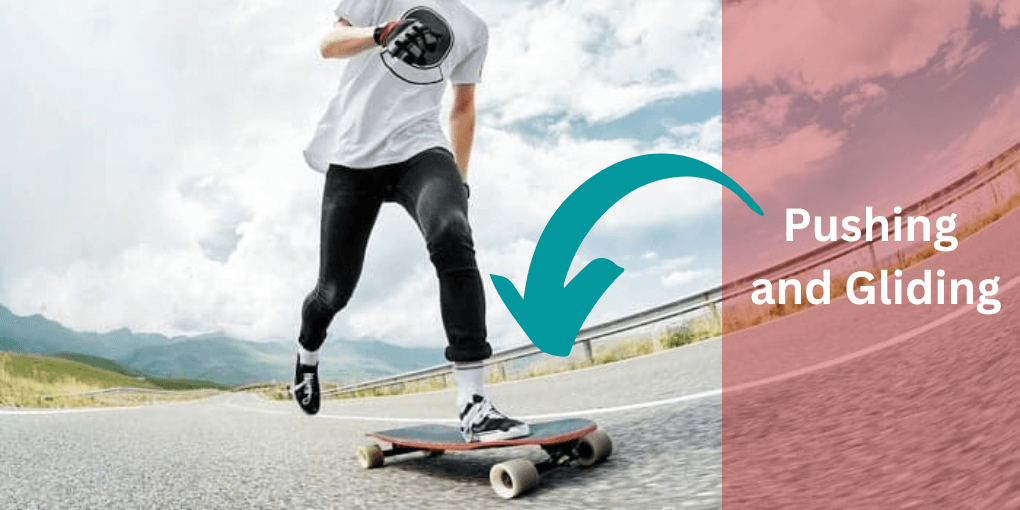
To push, place one foot on the ground and use it to push the board forward, then repeat the process with the other foot.
It is an essential skill for riding a longboard, as it allows you to start moving and maintain your speed.
It is also a good exercise for building leg strength and improving balance.
When pushing, keep your knees bent and use your body weight to generate power.
Keep your pushing motion smooth and fluid to maintain a smooth ride.
How To Push Effectively
Proper form: Push off with your back foot, keeping your front foot on the deck. Shift your weight to your front foot and use it to push off again. Repeat this process, alternating feet and using your body weight to generate momentum.
Building speed: To build speed, use a longer stride and apply more force with each push. As you gain more speed, make sure to keep your balance and adjust your weight as needed.
Practice: Start slowly and increase your speed as you become more comfortable with the motion. Try pushing on different terrains and surfaces to improve your skills.
By following these tips, you can learn to push and enjoy a smooth and efficient ride on your longboard.
Explanation of gliding
Gliding is the smooth and effortless motion of riding a longboard without pushing. It is achieved by maintaining a consistent speed and balance on the board. Gliding is an important skill for longboarders. It allows for longer, more efficient rides and a more relaxed riding experience.
To glide, maintain your speed by pushing and then keeping your balance as the board moves forward. As you become more skilled at gliding, you can start to make small adjustments to your balance.
When gliding, it is important to keep your body relaxed and maintain a stable riding stance. Keep your knees bent, your eyes forward, and your weight centered over the board.
Practice gliding on flat terrain, increasing your speed, and working on maintaining balance and control.
With time and practice, you’ll be able to glide smoothly and enjoy the freedom and flow of longboarding.
Understand the turning
Turning is an important skill for longboarding. It allows you to navigate through curves, navigate around obstacles, and change direction.
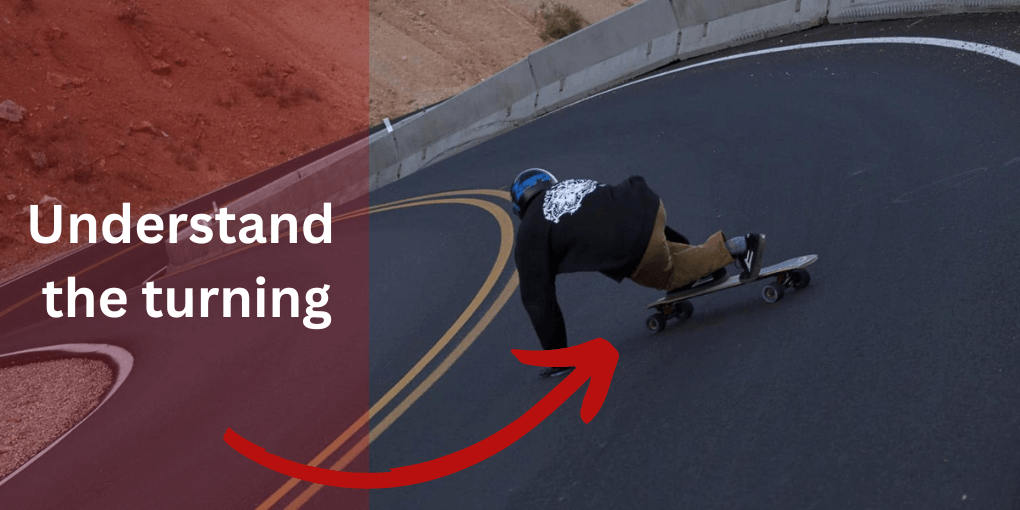
Turning involves shifting your weight in the direction you want to turn.
For example, to turn left, you would shift your weight to your left foot. This will cause the board to pivot on the trucks and turn in the desired direction.
Different types of turns
Different types of turns:
- Carve turns: Carve turns are smooth. But sweeping turns are performed by shifting your weight from side to side. To perform a carved turn, shift your weight to your front foot and use it to steer the board in the desired direction.
- Slalom turns: Slalom turns are quick. These tight turns shift your weight and use your feet to steer the board. To perform a slalom turn, shift your weight from side to side while turning the board in the desired direction.
- Sharp turns: Sharp turns are suddenly turned in a quick and decisive manner. To perform a sharp turn, shift your weight to the front or back foot and use it to turn the board in the desired direction.
- Power slides: Power slides are skids sliding the board out from underneath you. You need to shift your weight to one foot and use your other foot to slide the board in the desired direction.
These are some of the most common types of turns for a longboard. Each type of turn requires a different weight distribution and technique. They can combine and modified to suit different riding styles and situations. By practicing different types of turns, you can develop skills and confidence. It makes a smooth and controlled ride.
How to turn effectively
Let’s read how to turn effectively:
- Weight distribution: It is very important to have good weight distribution for a perfect turn. Keep your body weight centered over the board and shift your weight in the direction you want to turn.
- Knees bent: Keep your knees bent to maintain stability and control while turning. This allows you to make quick, precise movements as needed to steer the board in the desired direction.
- Footwork: Use your feet to control the direction and speed of the turn. Move your feet in the direction you want to turn and use the trucks to pivot the board.
- Look ahead: Keep your eyes focused on where you want to go and look ahead in the direction of the turn. This helps you to maintain balance and control while turning.
- Practice: Turning takes time and you need to practice to become an expert. Start on flat terrain and increase your speed as you become more comfortable. Try different types of turns to improve your skills and build confidence.
By following these tips, you can learn to turn and navigate through curves and obstacles while riding your longboard.
Explanation of different stopping techniques
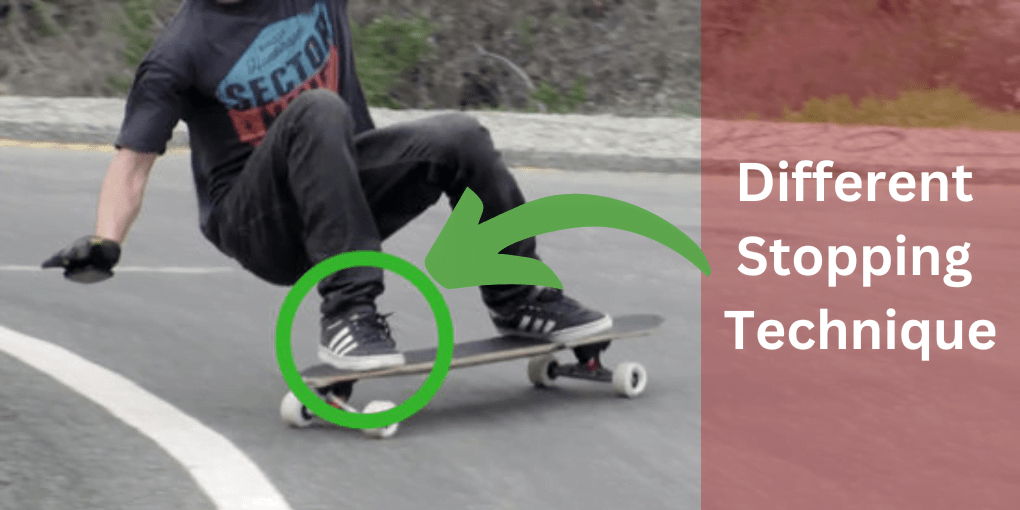
Explanation of different stopping techniques :
- Foot braking: Foot braking involves using your foot to drag on the ground to slow down and stop the longboard. To perform a foot brake, shift your weight to one foot and use the other foot to drag on the ground.
- Heel braking: Heel braking involves using your heel to drag on the ground to slow down and stop the longboard. To perform a heel brake, shift your weight to one foot and use the heel of the other foot to drag on the ground.
- Toe braking: Toe braking is the process of stopping and slowing down a longboard by dragging your toes across the ground. You need to shift your weight to one foot and use the toes of the other foot to drag on the ground to make it.
- Slide braking: When you want to slow down or stop, you slide the longboard out from under you. To do a sliding brake, shift your weight to one foot and slide the board in the direction you want to go with the other foot.
These are some of the most common stopping techniques used in longboarding. It’s important to practice these techniques and develop a good sense of balance for control before attempting to stop at high speeds. Always wear appropriate safety gear and be aware of your surroundings while riding.
Explanation of the importance of safety
Any sport or physical activity carries inherent risks. It can be hazardous if proper safety precautions are not taken.
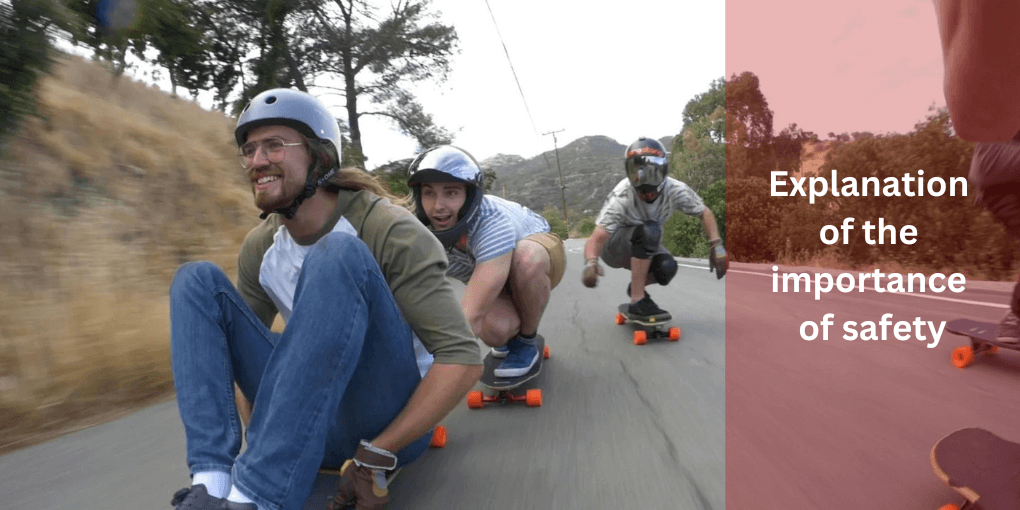
It’s important to always wear appropriate safety gear, such as a helmet, wrist guards, elbow pads, and knee pads.
Additionally, it’s important to be aware of your surroundings and avoid riding in areas with heavy traffic or other hazards. Make sure to follow traffic laws and the rules of the road, and avoid riding under the influence of drugs or alcohol.
Finally, it’s important to understand your own skill level and only attempt tricks and stunts. You are competent and at ease performing. You can start with basic moves and increase the level of difficulty as you become more confident and skilled.
You can minimize the risk of injury and enjoy longboarding as a fun and rewarding activity by wearing safety gear.
Explanation of proper maintenance
Proper maintenance is important for ensuring the longevity and performance of your longboard. Here are some tips for proper maintenance:
- Cleaning: Clean your longboard to remove dirt and debris that can affect its performance. Use a soft cloth and mild soap and water to clean the deck, trucks, and wheels.
- Lubrication: Lubricate the trucks to reduce friction and improve the performance of your longboard. Use a high-quality lubricant designed for skateboard trucks.
- Wheel rotation: Rotate your wheels daily to prevent them from becoming worn down.
- Deck and truck tightening: Check the tightness of the screws and bolts on your longboard. This helps to prevent the deck from becoming loose and ensures a smooth ride.
- Bearings maintenance: Clean and lubricate your bearings to keep them running smoothly and prevent wear and tear.
Follow these maintenance tips and keep your longboard in good condition.
Final thoughts
Longboarding is a fun and rewarding activity that offers many physical and mental benefits. Longboarding is fun whether you’re riding about town, exploring new routes, or trying new tricks and acrobatics.
Longboarding is a fun way to explore nature and get in shape. It is a community-building activity that can be done alone or with others.
Whether you’re a beginner or an experienced rider, there’s always something new to learn and explore in the world of longboarding.
So, if you’re looking for a fun and challenging activity that offers endless possibilities, learn how to ride a longboard. With a little practice and dedication, you’ll be cruising down the roads and trails in no time!
FAQs
A longboard is a longer and typically wider version of a skateboard, designed for cruising and transportation. It differs from a skateboard in terms of size, shape, and purpose.
Essential safety gear includes a helmet, knee pads, elbow pads, and wrist guards. Wearing proper gear reduces the risk of injury in case of falls or accidents.
Regularly check and tighten loose nuts and bolts, inspect the deck for cracks, and clean the bearings. Lubricate the bearings and replace worn-out components as needed for optimal performance and safety.

